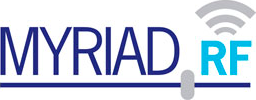As I wrote:
Connect it using 0.05" (1.27mm) 2 pin socket to J14.
Something like this.
or you can solder “regular” 2.54mm (0.1’’) pins yourselve - it is much easier to find and buy 2.54mm sockets…
Or you can solder the wires to J13 directly 
Does anyone know a mouser/digikey part number for a connector or even the jumper for the 1.27mm pitch?
Does anyone know a mouser/digikey part number for a connector or even the jumper for the 1.27mm pitch?
DO NOT use a jumper, that would short circuit ground to the 3.3v rail and damage your board.
I was not planing on using a jumper for the fan. There are other 1.27mm jumpers on the board I wanted a few extras but thanks for the warning - I guess it wasn’t clear.
@rast It appears that European connectors are 1.27mm (such as Zack’s link) and American are 1.25mm. Mouser and Digikey carry the Molex Picoblade 1.25mm connectors, which we have successfully fit to the J14 header. We did a lot of searching, but would like to be proved wrong.
Hello @rast,
Here is a 1.27mm jumper from Digi-Key. Just do not use it for fan as rightly warned mzs!
By the way, you can find all the components, suppliers and part numbers in LimeSDR-USB BOM.
Hello @Zack
Just found this thread and read the specs of the FANs you’ve tested.
I see they are rated for 5VDC and the board FAN header is labeled 3.3V.
I assume this is not an issue and they would just run slower.
I already have a 5VDC brushless FAN in my spares drawer (this one: http://www.mouser.it/ProductDetail/ADDA/AD0505LB-G708-LF ) and it also has lower power at 450 mW.
Could you please confirm that I could use this as well ?
I was initially considering to run a fan continuously to avoid glitches on power possibly affecting the board… did you observe any effect due to the temperature triggered ON/OFF switching ?
thank you,
mario
A sealed box filled with helium might help a bit with heat transfer, it has a much higher heat transfer coefficient than nitrogen. Combined with a box designed as a heat sink (like a Hughes ODU case) and good glue on heatsinks on the chips and you’ve gone the telecom route.
I’m planning to put my LimeSDR board into a 100x76x35mm aluminum case with Luftek front and rear panels.
Instead of the “ears” that come with the Luftek panels, I plan to use thermally conductive electrically insulated pads between the bottom of the LimeSDR and the bottom of the case, and threaded aluminum hex spacers so that the board is well grounded to the case through the four mounting holes (which go to the ground plane), and so that heat from the bottom of the board will be conducted to the aluminum case which will act as a head spreader. I will also be adding an aluminum heat sink to the top half of the aluminum case for further heat dissipation. I might also put metal heat sinks on top of the big square packaged chips.
Is any of this going to mess up the RF performance of the board?
W0JT
Nope.
And for those just wanting to heatsink their LimeSDR, check out this post today -----> Heatsinking Your LimeSDR
73 de Marty, KN0CK
That is a good choice Marty. I have used something like that on another project and they come with the thermal adhesive and a peal off backing, just ready to stick. I don’t plan on running mine wideband so the heat will be less.
Larry in El Paso
SPI board address offsets for manual driving FAN are: 0xCC and 0xCD
more in: https://github.com/luftek/LimeSDR-USB/issues/19
0xCC - 0 = auto, 1= manual
0xCD - 0 = off, 1 = on
